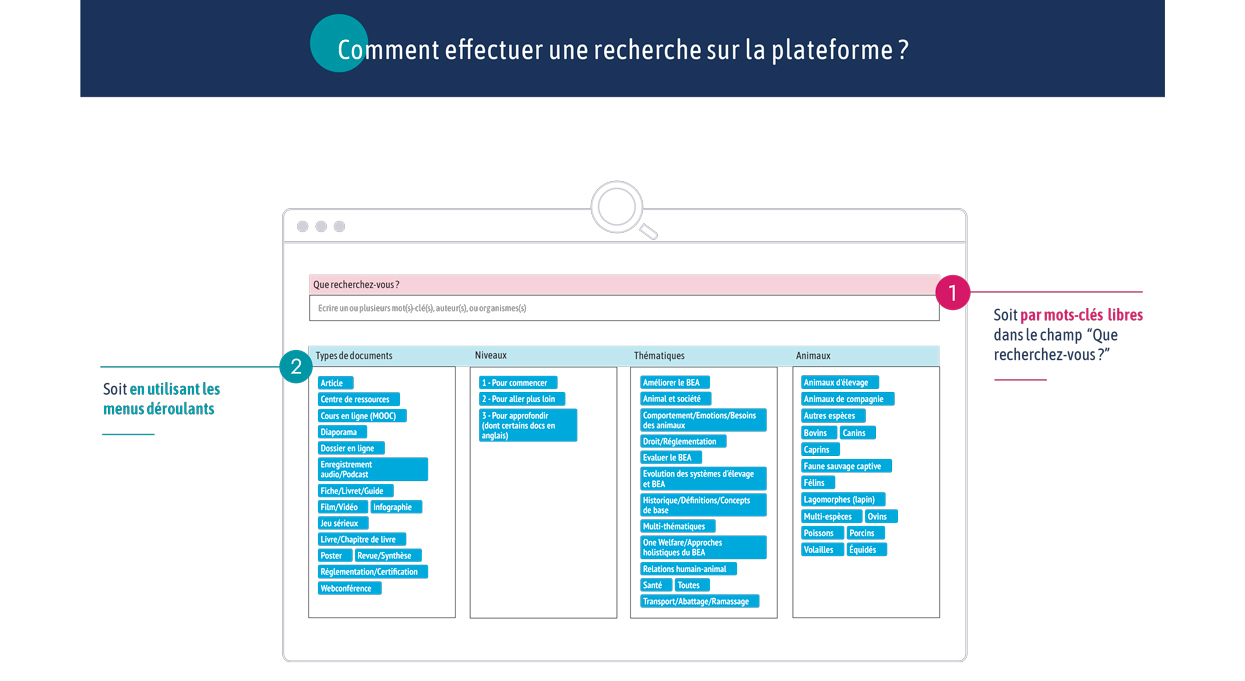Type de document : article scientifique publié dans Animals
Auteurs : Marlyn H. Romero, Magali Rodríguez-Palomares, Jorge Alberto Sánchez
Résumé en français (traduction) : La réforme est le départ des vaches du troupeau suite à la vente, l’abattage, des raisons sanitaires, la réglementation nationale, la récupération ou la mort. Les vaches de réforme sont retirées des exploitations qui présentent des problèmes de santé, de production, de comportement ou autres, et pendant la période précédant l’abattage, elles sont parfois maintenues sans nourriture ni eau, ce qui compromet leur bien-être. L’objectif de cette étude était d’évaluer l’état de bien-être des vaches laitières de réforme avant l’abattage en utilisant des mesures basées sur les animaux et d’identifier les associations possibles entre elles. Des données ont été enregistrées pour 62 fermes de production laitière différentes, concernant 137 vaches de réforme (n = 60 Holstein et n = 77 croisements de Normandes) abattues dans un abattoir en Colombie (Amérique du Sud). Dans cette étude, nous avons évalué et enregistré les conditions de transport terrestre, la santé des animaux à l’arrivée à l’abattoir, l’interaction homme-animal, les variables physiologiques du stress et l’association de ces variables avec des ecchymoses caractéristiques sur la carcasse, la durée de l’hébergement, la présence de maladies et le stade de gestation. Au total, 98,5% des vaches étaient très maigres, 35,7% étaient gestantes et 84,7% avaient des ecchymoses sur la carcasse. Au total, 74,5% présentaient des conditions cliniques, notamment des lésions cutanées (32,4%), des mastites (27,5%), des boiteries (21,6%), des sécrétions vulvaires (8,8%), des diarrhées (6,8%) et des carcinomes oculaires (2,9%). Le nombre total de vaches de réforme présentant des ecchymoses avant l’abattage a été associé à la taille du lot, à la durée du transport, à la présence d’une gestation, à l’état du score corporel et aux niveaux de créatine kinase. Les résultats suggèrent que les vaches n’étaient pas aptes au transport car leur santé était gravement affectée avant qu’elles ne quittent les fermes. Les indicateurs basés sur les animaux utilisés dans cette étude sont utiles pour évaluer le bien-être des vaches laitières de réforme dans les abattoirs.
Résumé en anglais (original) : Culling is the departure of cows from the herd as a result of sale, slaughter, health, national regulations, salvage, or death. Cull cows are removed from farms with poor health, production, behavior, or other problems, and during pre-slaughter they are sometimes kept without food and water, which compromises their well-being. The objective of the present study was to evaluate the welfare state of culled dairy cows during pre-slaughter using some animal-based measurements and to identify possible associations between them. Data were recorded for 62 different dairy production farms referring to 137 cull cows (n = 60 Holstein and n = 77 Normandy crosses) slaughtered in an abattoir in Colombia (South America). In this study, we evaluated and recorded land transport conditions, the health of animals on arrival to the abattoir, human–animal interaction, stress physiological variables and the association of these variables with characteristic bruises on the carcass, the lairage time, the presence of diseases, and the stage of pregnancy. In total, 98.5% of the cows were very thin, 35.7% were pregnant, and 84.7% had bruising on the carcass. In total, 74.5% had clinical conditions; these included skin lesions (32.4%), mastitis (27.5%), lameness (21.6%), vulvar secretions (8.8%), diarrhea (6.8%), and eye carcinoma (2.9%). The total number of cull cows with bruises during pre-slaughter was associated with lot size, transport time, presence of pregnancy, body score condition, and creatine kinase levels. The results suggest that the cows were not fit for transport because their health was severely affected before they left the farms. The animal-based indicators used in this study are useful for evaluating the welfare of cull dairy cows at abattoirs.






